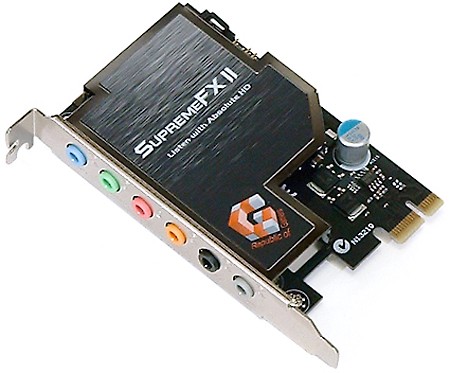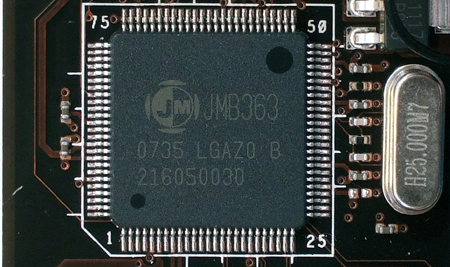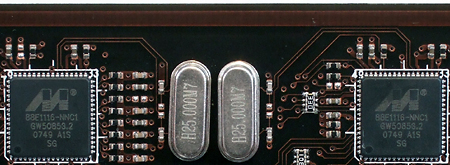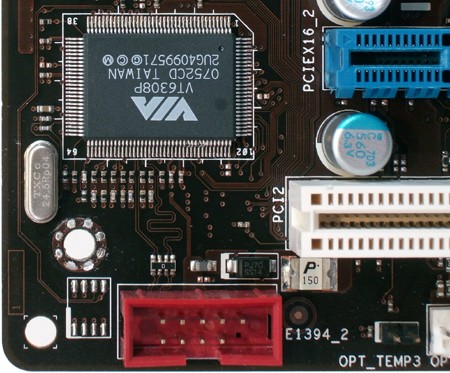790i Ultra SLI Motherboards Compared
Onboard Devices
| Northbridge | Nvidia nForce 790i Ultra SLI SPP |
| Southbridge | Nvidia nForce 790i Ultra SLI MCP |
| Voltage Regulator | Eight Phases |
| BIOS | 0901 (06/27/2008) |
| 333.3 MHz (FSB-1333) | 333.3 MHz (+0.0%) |
| Clock Generator | Nvidia |
| Connectors and Interfaces | Row 6 - Cell 1 |
| Internal | 3x PCIe x16 (Transfer Modes: 2x 2.0, 1x 1.0) |
| Row 8 - Cell 0 | 2x PCIe x1 |
| Row 9 - Cell 0 | 2x PCI 2.2 |
| Row 10 - Cell 0 | 2x USB 2.0 (2 ports per connector) |
| Row 11 - Cell 0 | 1x IEEE-1394 FireWire |
| Row 12 - Cell 0 | 1x Floppy |
| Row 13 - Cell 0 | 1x Ultra ATA (2 drives) |
| Row 14 - Cell 0 | 6x Serial ATA 3.0 Gb/s |
| Row 15 - Cell 0 | 1x S/P-DIF Out |
| Row 16 - Cell 0 | 3x Thermal Sensor Input |
| Row 17 - Cell 0 | 1x Asus LCD Poster Connector |
| Row 18 - Cell 0 | 1x Fan 4 pins (CPU) |
| Row 19 - Cell 0 | 5x Fan 3 pins (Chassis/Power) |
| Row 20 - Cell 0 | 1x Internal Power Button |
| Row 21 - Cell 0 | 1x Internal Reset Button |
| IO panel | 1x PS2 (keyboard) |
| Row 23 - Cell 0 | 6x USB 2.0 |
| Row 24 - Cell 0 | 2x Digital Audio Out (S/P-DIF optical + coaxial) |
| Row 25 - Cell 0 | CLR_CMOS Button |
| Row 26 - Cell 0 | 1x IEEE-1394 FireWire |
| Row 27 - Cell 0 | 2x External SATA |
| Row 28 - Cell 0 | 2x RJ-45 Network |
| Mass Storage Controllers | Row 29 - Cell 1 |
| nForce 790i MCP | 6x SATA 3.0 Gb/s (RAID 0, 1, 0+1, 5, JBOD) |
| JMicron JMB363 PCI-E | 2x External SATA 3.0 Gb/s (RAID 0, 1 JBOD) |
| Network | Row 32 - Cell 1 |
| 2x Marvell 88E1116-NNC1 PCI-E | 2x Gigabit LAN Connection |
| Audio | Row 34 - Cell 1 |
| Asus SupremeFX II Riser Card | 7.1 + 2 channel Multi-Streaming Output |
| FireWire | Row 36 - Cell 1 |
| VIA VT6308P PCI | 2x IEEE-1394a (400 Mbit/s) |
With a total of 28 lanes on the chipset’s southbridge and only sixteen dedicated to a third graphics card, Asus had no problem putting its eSATA and dual Gigabit network controllers on the remaining twelve. Even with the two PCI Express x1 slots taking up two lanes, seven lanes remain unused. One might question why Asus chose a PCI based IEEE-1394 FireWire controller, since so many PCI Express lanes went to waste, but the easy answer is that two 400 megabit devices can’t possibly saturate even the limited bandwidth of PCI.

Asus uses a riser card for audio, leaving the port panel with digital connections only. An ancient PS/2 keyboard port remains where we once found the mouse port, while the missing connector has been replaced with two USB ports. The chipset provides the HD audio signal from which Asus’ SupremeFX II riser card gets its signal, but the digital signal can also be pulled directly from the motherboard through coaxial or optical connections.
We also see a CLR_CMOS button on the back panel, which is an easy place to reach should an overclocking experiment fail. Those afraid that the port panel switch might be used unintentionally will find a disabling switch on the motherboard’s top side.

The SupremeFX II audio riser module carries all analog connections, including internal CD-Audio In and Front Panel Audio connectors. External jacks support eight output channels (7.1 audio) plus microphone and line inputs simultaneously. The card’s ADI 1988B is also capable of multi-streaming separate front panel and back panel signals when configured to do so.

Asus chose JMicron’s popular JBM363 controller for the Striker II Extreme eSATA ports. The motherboard doesn’t use this controller’s additional Ultra ATA interface, so it’s a mystery to us why Asus didn’t use a simpler, smaller part. PCI Express provides up to 250 MB/s of bandwidth in both directions simultaneously.

Twin Marvell 88E1116-NNC1 network controllers provide full Gigabit bandwidth bidirectionally, thanks to their PCI Express interfaces.

VIA’s VT6308P IEEE-1394 FireWire controller uses the old PCI interface, which is more than enough for two ports. One can clearly see how far into the bottom rear corner Asus has shoved its internal FireWire breakout header, causing cable routing issues for the front panel port of most ATX cases.
Get Tom's Hardware's best news and in-depth reviews, straight to your inbox.
